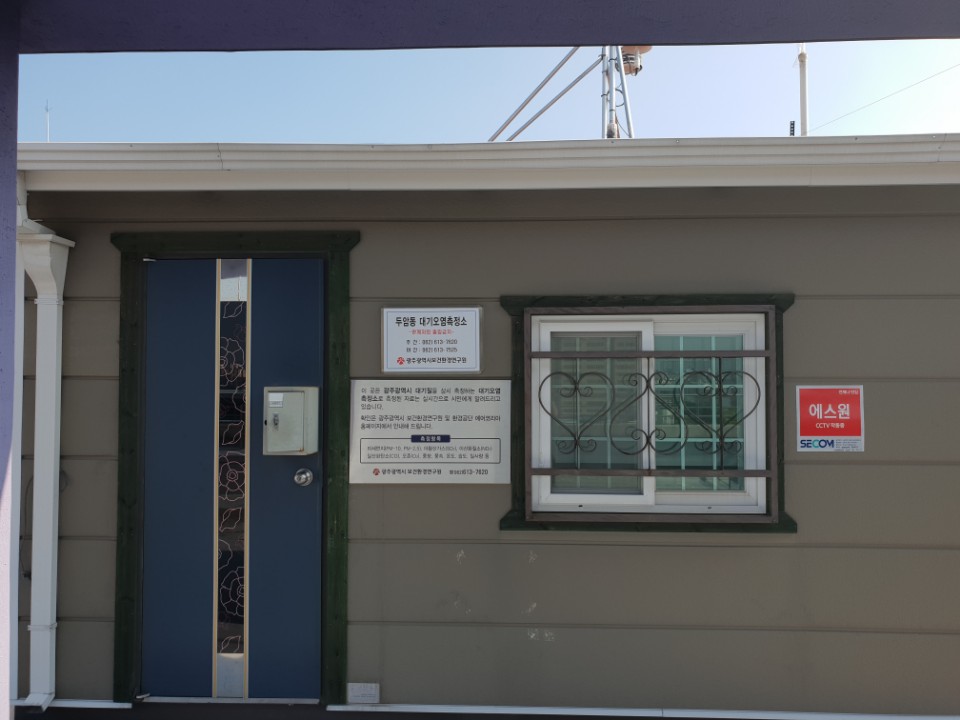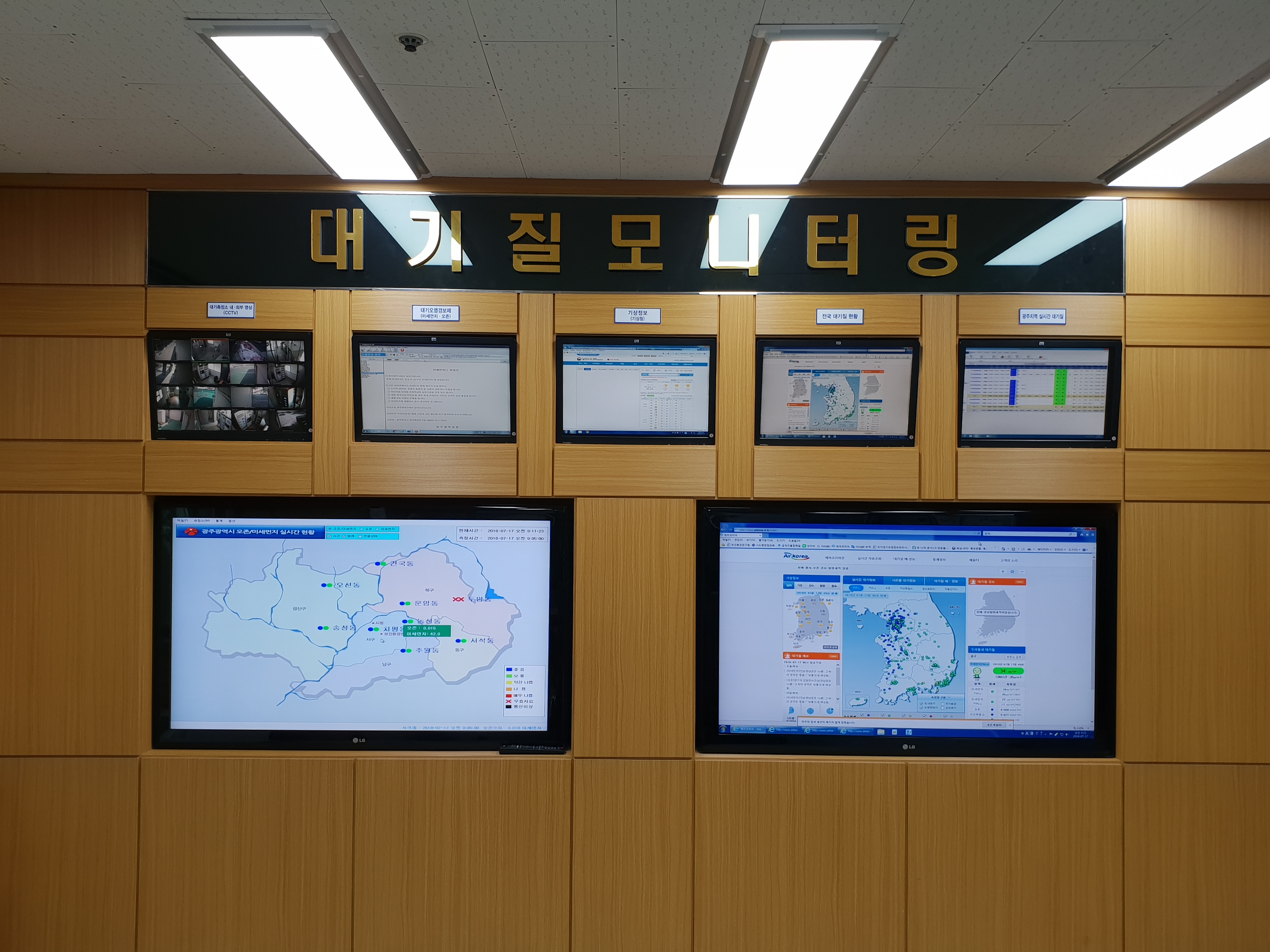What Can Be Done About the Fine Dust Problem?
Written by Jennifer Marlton
Special thanks to Dr. Shin Gyonggu
Photographs courtesy of Gwangju Metropolitan City Climate Change Response Division
One of the largest risks to respiratory health in South Korea is the rising problem of fine dust (미세먼지). The amount of pollution in the air has been rising steadily. South Korea is one of the most polluted countries in the world and is the most polluted of any OECD country, followed closely by Poland. Fine dust is chemically composed of potassium and levoglucosan, and is often produced by burning fossil fuels. The high levels of dust in South Korea can have a strong impact on locals living here and is an issue that may prevent expats from immigrating here or staying for long periods of time.
There are views that the government at different levels within South Korea has been unable to prevent or deal with the fine dust problem, which appears as a distinct failure on its part. The government has not made any long-term plans for dealing with the fine dust issue and has not educated the public well on the correlation between its activities and the increase in fine dust. The industries that are making this issue worse are only concerned with making a profit. In comparison to the South Korean government, the Chinese government has ordered a transition to electric cars and plans to phase out cars run on petrol in the next few years. Meanwhile, Korean electric cars are almost non-existent. South Korea has 53 power plants and plans to increase this number. Gas- and coal-fired power plants have increased their output significantly in the last few years. Koreans’ electricity costs are subsidized, which encourages the thoughtless waste of electricity. Although China is an easy target to blame, most of South Korea’s fine particulate matter is domestically produced, and the government needs to implement measures to counteract this and educate the public on all of the causes and effects. With over 10,000 deaths each year that can be traced back to air pollution, the public should not only be aware of how to deal with the pollution but also how to prevent it.

Jeong Eun Song is an activist with the Korean Federation for Environmental Movements (KFEM) in Gwangju. It is a non-profit organization that is an important part of the community. It is the biggest environmental NGO in South Korea, with over 80,000 members and 50 local offices nationwide. The Gwangju branch is comprised of a mixture of scientists and environmental activists. It has 1,800 members, and at the branch there are four full-timers, two part-timers, and twenty lecturers.
The organization works in several environmental fields. Jeong stressed that although she views many environmental issues as important, several of them are quite pressing at the moment. One local environmental issue is that of the four major riverbeds, in which the conservative government pumped out sand from the rivers in order to make them deeper, resulting in them becoming polluted. There are also issues with mattresses releasing radiation, hundreds of children dying from humidifier chemicals, concerns about waste and energy reduction, and weather issues. KFEM’s current campaign is to reduce plastic waste by reducing the use of single-use plastic cups and encouraging people to use reusable cups instead. The organization issued a challenge for citizens not to use any plastic or paper cups. It would also like to encourage readers of the Gwangju News to participate and try to lower their consumption of plastic cups.
There are theories that South Korea’s dust problem emanates from China’s rising problem with pollution; however, the reality is much more complicated. There is evidence that much of the pollution problem in South Korea is caused by its own fossil fuel consumption. According to Jeong, the dust may be caused from air flow from China. But it may also be from a combination of sources. The super-micro dust is mostly from cars, and this dust level is highest during rush hour. The levels of pollution in China and South Korea do not always correlate – the wind direction has to be from China to South Korea for this to be measured. When it is not, then the levels of pollution tend to be very different.

There are different pollution levels in Gwangju and in Seoul as well. Seoul’s pollution levels can rival those of Shanghai and Beijing, with their air quality in 2016 being deemed unhealthy for sensitive groups on 78 days of the year. Seoul’s average pollution level is twice the average for most OECD countries. While the general level of dust is lower in Gwangju than in other major cities, the level of small particle dust (particulate matter of less than 10 micrometers – PM10) is higher. Gwangju’s dust level was comparatively low until about four years ago, when it started to increase for reasons yet unknown. Jeong assumes that it may be caused by the restriction of airflow due to the number of high-rise buildings going up across Gwangju. She is not sure whether an increase in cars has also influenced this.
A public health warning is given to citizens if the amount of fine dust reaches a certain level. Citizens are encouraged to stay indoors, or if they must go outdoors, they should only remain outside for short periods of time and wear a dust mask. The warnings are particularly important for the very young and the very old, who are more likely to be sensitive to the effects of fine dust. The fine particulate matter can settle deep into people’s lungs and many hospital patients affected by the dust complain of wheezing and coughing that will not cease. As people are becoming more aware of the fine dust problem, they are staying indoors more. Public knowledge of the issue is generally high because of media campaigns. However, the level of early deaths is rising. In 2015, the Health Effects Institute (HEI) found that South Korea’s ambient air pollution, ranked fifth highest in the world as a cause of early death, is the number-one environmental risk factor in the country and has caused more deaths than malaria or HIV/AIDS.
There are different public health warning levels. There is one that simply suggests caution, similar to a high-level weather warning. The dust level for each square meter is measured. The World Health Organization has set the appropriate limit at ten micrograms (that’s 10 one-thousandths of a milligram) per cubic meter. In Gwangju, if there are 15 micrograms per square meter, then the lowest level dust watch is given. If it is from 15–30 micrograms, a medium-level warning is sent out. If the dust level is from 30–75 micrograms, then a high-level warning is given. If a dust level of 75 micrograms continues for two hours, then there is a serious warning. If it goes up to 150 microgram for more than two hours, the highest level warning is given, which is equal to a national disaster. This highest level warning has been issued once this year, while the high-level warning has already been issued six times in 2018.
The high-level warning for Seoul is 50 micrograms, while Gwangju’s emergency measures are implemented when the fine dust level reaches 76 micrograms. The emergency measures in Seoul include the city closing government parking lots to reduce the amount of cars and ordering construction sites to reduce working hours. Authorities also make efforts to provide public transportation in Seoul for free.
KFEM sees the fine dust issue as more pressing this year. The organization has established a counsel to talk about policy development. It is carrying out protection campaigns for people who are vulnerable and often organizes focus groups to investigate the issue.
Jeong said that in order to tackle the issue, the local government has begun a two-tier system that allows cars to run only every other day, but it applies only to government cars in Gwangju. The organization wants this measure to be expanded to private cars in the community in order to further reduce pollution. KFEM recommends that outdoor workers’ hours be reduced and vulnerable people wear dust masks. The organization also wants the prices for dust masks to be lowered and for employers to provide them for outdoor workers.
Jeong thinks the future is bright but the local government needs a more effective campaign. There are still many issues with the amount of pollution caused by the rising amount of traffic, but the government is not expanding the public transportation system significantly. The government’s measures should be more comprehensive. High-rise buildings are increasing and blocking the flow of air, which is worsening the fine dust problem in Gwangju. Measures to reduce fine dust levels need to be supported by the citizens, though they are often not willing to deal with the inconvenience. Jeong said she and those at KFEM are working to make Gwangju residents conscious of this issue.
Protect Yourself from Fine Dust!
- Refrain from staying outside for too long.
- Wear a mask whenever you go outside.
- Try to avoid places with the highest risk of pollution and refrain from doing too many activities.
- Wash yourself thoroughly after engaging in outdoor activities.
- Eat lots of vegetables and fruits with vitamin C and drink lots of water.
- Ventilate your house frequently.
- Refrain from activities that can cause pollution.
- Use public transportation more than private cars.
Source: Gwangju Metropolitan City
The Author
Jennifer is from Australia and is currently working as an English teacher in Gwangju. She loves writing, traveling, and experiencing different cultures. She has enjoyed exploring and experiencing the different aspects of Gwangju during her time here.




